#Pediatric Vascular Surgeon Jobs
Text
Specialist Vascular Surgery Job Vacancies in Abu Dhabi, United Arab Emirates
Specialist Vascular Surgery Job Vacancies in Abu Dhabi, United Arab Emirates
Specialist Vascular Surgery Job Vacancies in Abu Dhabi, United Arab Emirates
JOB DESCRIPTION
The Incumbent is a Vascular Surgeon who provides consulting, operative [major as well as minor/ elective as well as emergency] and attending services to patients of any age group, including diagnosis, pre- and post-operative care of all operative cases and procedures in the field of vascular and trauma…

View On WordPress
#Al Ain Vascular Surgery Jobs#Angioplasty Specialist Jobs Abu Dhabi#Cardiovascular Surgeon Jobs Abu Dhabi#Dubai Vascular Surgery Jobs#Endovascular Surgeon Jobs Abu Dhabi#Endovascular Surgeon Salary#EVS Jobs#Healthcare Jobs United Arab Emirates#International Job Opportunities Vascular Surgery#Interventional Radiologist Jobs Abu Dhabi#IR Jobs#Job Vacancies in Abu Dhabi#Medical Surgical Jobs Abu Dhabi#Openings for Vascular Surgeons in Abu Dhabi#Pediatric Vascular Surgeon Jobs#Relocation Assistance for Vascular Surgeons#Specialist Vascular Surgeon Careers Abu Dhabi#Specialist Vascular Surgeon Jobs UAE#Top Hospitals Abu Dhabi Vascular Surgery#Vascular Specialist Jobs UAE#Vascular Surgeon Assistant Jobs Abu Dhabi#Vascular Surgery Job Market UAE#Vascular Surgery Jobs Abu Dhabi#Vascular Surgery Jobs NMC Abu Dhabi#Vascular Surgery Vacancies United Arab Emirates#Vascular Technologist Jobs Abu Dhabi#VS Jobs#Work in Abu Dhabi Medical Field
0 notes
Text

• Name: Romy "Ro" Cho Naga-Blackthorn • Class: The Gambini • Age: 30 • Backgrounds: Flesh Wound • LIs: too many oops •
• character tag • inspo tag • ro's ROs •
Adopted by Michelle Cho and Ira Cohen as a baby, Ro spent her life trailing behind her renowned vascular surgeon of a mother at the various hospitals she worked within. While most kids were learning to tie their shoes, Ro was practicing sutures at the nurse's station with her aunt Esther and sitting in galleries watching her mother perform complex surgeries. There was never any doubt in her mind what she wanted to do when she grew up, despite her parents' slight disapproval: Ro was a surgeon, or at least she was damn sure going to work her ass off to be.
She worked her ass off to excel throughout her biomedical engineering undergrad degree and later through med school, also working a full time content creation job to pay for both her transition and her schooling.
Throughout her residency, she went back and forth on what specialty she would choose. What she truly loved working with was nerves, which could have gone a few ways - plastics, neuro, ortho, etc. Eventually, she settled into being double certified in ortho and neuro (specifically, pediatric neuro), loving the challenge and specializing in spines and nerves.
Notable Abilities
Not particularly gifted in magic, but can pick up on it easily once it is done to her. Therefore, she's picked up a few tricks from those around her, including Machado's prophetic dreams.
Has never met a mechanical device that she couldn't fix.
Literally a brain surgeon who sometimes teams up with one of her wives to operate on fetuses' spines.
Holds a world record in DDR and a few in assorted video game speed runs.
Uses 3D design combined with her knowledge of biomechanics to make fully articulated TTRPG minis. What, like it's hard?
Connections
Ward Easton - her bestie since residency
Claire Berkowitz (of the Berkowitz family dental dynasty) - bestie since they became roomies in med school, absolutely inseparable and codependent
Yardena Cohen aka Gigi Coco - her grandmother on her father's side and her biggest cheerleader; might be a former ecoterrorist who knows
Isidora Jacinto - her long lost biological little sister who is, uh, far too much like her in every way and is WAY too close to beating her DDR record
Misc
Japanese and Filipina, though she was raised by her Jewish father and Korean mother
#category: ocs#game: stranger still#oc: romy cho#finally making an entry for ro now that i have art of her 😤
4 notes
·
View notes
Text
9 Reasons Why You Should Pursue a Career in the Healthcare Sector
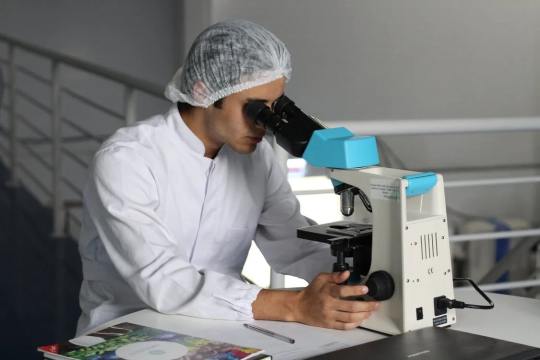
9 Reasons Why You Should Pursue a Career in the Healthcare Sector
When choosing which career path to pursue, whether you are still in high school, college, or actually just finishing your undergraduate degree at university, it can sometimes be challenging and even overwhelming when faced with choosing where you want your professional career to go.
However, if you are someone who is firmly committed to a career in the healthcare sector, you have come to the right place. Here, for your information and, of course, for your reading pleasure, are nine top reasons to pursue a career in the healthcare sector.
1. A Plethora of Areas of Specialization
Often, after you have been working in a particular industry, and more specifically, one company, for a number of years, it can seem as if there is no room for career progression, and unless you are prepared to change careers, you are simply faced with two different yet entirely clear options.
The first option is to leave the company you currently work for and apply for a similar job at a rival business, and the second is to simply abandon your dreams of career progression and instead be content where you currently are.
However, when you decide to pursue a career in the medical profession and healthcare sector, you are afforded a plethora of opportunities to either climb the proverbial ladder in one specialism or else divert entirely to another, still within the same framework. This way, you slowly and effectively build on not just your expertise and knowledge base but also retain your levels of respect afforded by your peers and superiors alike.
Below is just a small selection of the most enthralling and important specialisms a medical professional can enter into over time:
- Family medicine
Family medicine, instead of focusing on a particular area of the body, focuses on treating individual patients as a whole and providing comprehensive healthcare for all. Subspecialties of family medicine include pain medicine, adolescent medicine, sleep medicine, geriatric medicine, palliative medicine, and sports medicine.
- Ophthalmology
Essentially, medical professionals who specialize in ophthalmology focus on everything to do with the eyes. Subspecialties of ophthalmology include uveitis, glaucoma, ocular, orbit, reconstructive surgery, pediatric ophthalmology, anterior segment, and neuro-ophthalmology.
- Surgery
Surgeons are highly trained medical professionals who are able to provide a variety of surgeries that can save people’s lives and are well versed in intensive care, wound healing, physiology, and human anatomy. Subspecialties of surgery include thoracic surgery, pediatric orthopedics, spinal surgery, critical care surgery, neurological surgery, oral surgery, trauma surgery, plastic surgery, colon surgery, and pediatric surgery.
- Immunology
Medical professionals who have dedicated their working life to a specialism in immunology concern themselves with both adults and children who are suffering from diseases of the respiratory system and immune system. Aside from clinical care, immunologists also often move into education and research as well.
- Internal medicine
Doctors who work in internal medicine are usually referred to as internists and treat diseases and illnesses relating to the vascular systems of patients of all ages. Subspecialties of internal medicine include rheumatology, geriatric medicine, critical care medicine, sports medicine, pulmonary disease, oncology, gastroenterology, infectious diseases, nephrology, endocrinology, and transplant hepatology.
- Pathology
Medical specialists in pathology study the nature and causes of each and every disease. Subspecialties of pathology include microbiology, clinical pathology, chemical pathology, forensic pathology, immunopathology, and molecular pathology.
- Diagnostic radiology
Diagnostic radiologists are medical professionals who are thoroughly trained in the diagnosis of illnesses through sound waves, x-rays, and radioactive substances. Subspecialties of diagnostic radiology include chest radiology, neck and head radiology, pediatric radiology, cardiothoracic radiology, gastrointestinal radiology, neuroradiology, interventional radiology, musculoskeletal radiology, and nuclear radiology.
- Pediatrics
Pediatrics firmly concerns itself with the diagnosis, treatment, and medical care of children and infants. Subspecialties of pediatrics include pediatric rheumatology, pediatric cardiology, pediatric endocrinology, pediatric nephrology, pediatric gastroenterology, pediatric critical care medicine, and pediatric hematology-oncology.
- Urology
Urologists focus solely on the female and male urinary tracts, encompassing the urethra, kidneys, bladder, and ureters. Subspecialties of urology include male infertility, renal transplant, calculi, pediatric urology, neurology, and urologic oncology.
2. A Huge Selection of In-Demand Jobs
Another supreme benefit of working in the medical and healthcare sectors is the fact that somewhat, unfortunately, people are always going to be poor and need treatment.


The most in-demand areas of healthcare that are currently actively looking to grow and expand or else are struggling to cope with the strain of higher levels of admissions center around the following:
- Medical practice manager
- Laboratory technician
- Phlebotomist
- Licensed practice nurse
- Gynecology & obstetrics physician
- Dentist
- Cardiology physician
- Admissions coordinator
- Nursing home administrator
- Laboratory manager
- Dental assistant
- Medical office manager
- Clinical administrator
- Anesthesia technician
- Nursing assistant
3. Substantial Competitive Salaries
As is often the case with vocational professions such as those within the healthcare sector, the more academic qualifications you possess, and more specifically, the higher your degree in medicine, the larger potential for a substantial yearly salary.
There is obviously a wide range of different professions and career pathways within the medical industry, all naturally differing in terms of responsibilities and subsequent pay grades.
According to an in-depth report conducted and released by the United States Bureau of Labor Statistics, the following frontline careers in health care are the most highly paid of them all:
- Certified registered nurse anesthetist
Average wage of between $180,000 and $192,000 per year
- Neonatal nurse practitioner
Average wage of between $125,000 and $128,000 per year
- Cardiac nurse practitioner
Average wage of between $114,000 and $117,500 per year
- Orthopedic nurse practitioner
Average wage of between $113,000 and $116,000 per year
- Oncology nurse practitioner
Average wage of between $112,500 and $116,000 per year
- Nursing home administrator
Average wage of between $118,000 and $121,000 per year
- Clinical manager
Average wage of between $102,000 and $105,000 per year
- Public health advisor
Average wage of between $97,000 and $121,000 per year
- Biostatistician
Average wage of between $78,000 and $96,000 per year
- Epidemiologist
Average wage of between $74,000 and $108,000 per year
4. Leadership Opportunities
Due to the simple fact that the healthcare sector encompasses such a wide area of social, economic, and world issues and is heavily involved in virtually every aspect of modern life, there are also a huge number of fantastically rewarding and admittedly equally as challenging available leadership opportunities.
If you are someone who is passionate about improving the way individual patients are treated and cared for, the efficiency of the service, and the impact on the accessibility of healthcare for patients, yet do not feel as if a career on the frontline, as it were, is for you, then there is an alternative.
Leaders and managers in healthcare and all aspects related to the medical professional are absolutely intrinsic to the smooth running of the industry, and furthermore, if you choose to embark upon an Executive Masters in Health Administration Canada, you will be fully equipped to make a real and tangible difference to the healthcare sector.
Arguably, the people who hold leadership positions within the medical sector are just as influential as those medical professionals such as doctors and nurses who work directly in clinical care.
5. Healthcare is an Incredibly Respectful Profession
The fact of the matter is, even though it may seem harsh and possibly even slightly unkind to say, a large number of people in this country and overseas do not return after a hard day at work full of pride and purpose in what they have achieved.
For some people, this is simply an irrelevance, and more importantly, and perhaps enviably, they do not see work as anything other than a means to an end goal of being able to afford to enjoy life and provide for themselves and their family.
However, for people who feel as if they need more meaning and weight to their profession, a career in medicine and healthcare is the absolute pinnacle of a job that not only gives you a sense of self-respect but is respected by other people as well.
6. You Can Work Anywhere; Quite Literally!
If traveling the world is something that is extremely dear to you, and you often suffer from a niggling case of ‘itchy feet’, then this is another deep-seated reason why the pursuit of a medical career is certainly something you should consider.
Once you are a fully registered, certified, and practicing nurse, for example, there is a wide plethora of opportunities that are opened up to you, including the chance to work as a nurse abroad.
If this is something you are thinking about, either now or in the future, and you are interested in learning a little more, then the following guide should serve to help:
- Engage in thorough research
Regarding the particular country you are thinking of working in, it is incredibly crucial to engage in as much background research into healthcare, medicine, and nursing over there as you can. This essentially will serve to minimize your risk of encountering problems once you start.
- Language & qualifications
Not only do you need to ensure that you possess all the necessary qualifications to work professionally in your country of choice, but it is also to ensure that you are at least confident in the basics of the language before you leave. Everyone knows that the best way to learn a language is to immerse yourself in the local community, but if you intend on starting work straight away, this is obviously not an option.
- Join a nursing union
The importance of joining an international nursing union before you leave the country can simply never be understated, and it is even more recommended than joining a nursing union in your own country.
7. Your Working Hours Differ Greatly from the ‘Norm’
Some people enjoy the routine and the security provided by working a nine to five job role five days a week and having their weekends to themselves. Often, these types of jobs come with a sense of finality when an employee proverbially clocks out for the day, and again, this is acceptable and sometimes even desired for many people.
However, another exceedingly beneficial aspect of dedicating your professional working life to the healthcare profession is that your working shift patterns and working hours are not only incredibly varied but also flexible.
Furthermore, some medical professionals are even fortunate enough to entirely choose the hours and days that they work, which adds another level of freedom to the role.
8. Working in Healthcare is Good for Your Own Mental Health
Ever since the outbreak of the worldwide coronavirus pandemic over two-and-a-half years ago now, the issue and subject of self-care and protecting and nurturing your own mental health has finally, and not before time, been brought to the proverbial forefront.
Working as a nurse, doctor, or other medical professional will not only mean you are making a huge difference in the lives and, pertinently, the level of physical and mental health of a multitude of different people on a regular basis, but it will also do wonders for your own emotional health and wellbeing.
Just a few ways in which a medical career benefits your levels of mental health include, but are categorically in no way limited to, the following:
- Immersing yourself in this type of work forces you to live in the moment
- Seeing people in the different aspects of the healthcare system provides perspective
- A sense of pride and accomplishment in your work
- Physical exercise promotes mental health, and you will certainly be active in this career
9. Healthcare is Not Just a Profession!
Finally, but perhaps most importantly of all, the fundamental, strongest reason to enter the world of healthcare as a medical professional is that you will spend all day, every day, making a tangible and incredibly influential difference in people’s lives.
A person who chooses a career in medicine is, by their fundamental choice to enter the profession, undoubtedly a selfless, compassionate, empathic, and giving person, and the world simply would not function without people like them.
Read the full article
0 notes
Text
Life In Balance
"It's the Code of the West you must do unto others
Do unto others before themmothers do it unto you"
Roger Miller - Ballad of Waterhole #3
Early 1973.
The Son:
He is about 4 months old.
Since the day he was born, he was a frantic eater and would just inhale his bottle in seconds. After, he had trouble breathing. When he did it made a rattling sound.
After a few minutes, he would relax and everything would be fine.
The father and mother brought this up with their pediatrician who said that it was probably a 'floppy epiglottis'. "Don't worry too much, he will grow out of it."
The doctor recommended that whenever he had a problem breathing after taking his bottle - "Just take him into the bathroom and run hot water in the shower and hold him near the steam to loosen it up - it will calm him down."
This seemed to work pretty well for a short while.
One morning the father was getting ready to leave and catch the bus to go downtown to his job. As he walked into the living room, the mother frantically said "He's having problems breathing."
She ran back to the bathroom and turned on the shower. The father stands there in the living room hesitating to leave.
After a minute or so the mother runs into the room quietly screaming, "He's Not Breathing!" and lays him on the sofa.
The father moves to the sofa yelling, "Call The Ambulance." The son is lying on the sofa unmoving. He is not breathing. His face is blue.
The father starts breathing puffs of air into his mouth. After few puffs he stops and checks. More puffs of air. And more puffs.
Finally he starts breathing - but then what seems like a few seconds or a minute or a year later he stops again. More puffs and more puffs. He starts breathing a second time.
Now they can hear the fire truck turning the corner and stopping.
Later at the hospital, talking to their pediatrician one of the state's top pediatric surgeons coincidently stops by. After listening to the symptoms, he asks, "Have you considered it might be a vascular ring?" He draws a diagram showing the esophagus being constricted like a piece of string is tied around it.
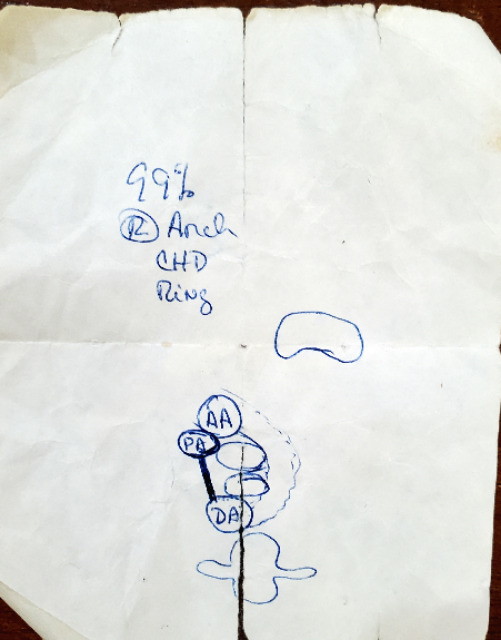
A few days later, after tests, it is confirmed. In what is considered open heart surgery, the son is sliced from the middle of his chest to the middle of his back and the vascular ring is cut away.
The scary part is that he was 4 1/2 months old. The gift from God part is that he soon became 5 months old.
Two decades later.....
The Father:
He is at work sitting at his desk. He starts to feel a little light dizziness. It passes and then a few minutes later it returns.
He remembers last night after dinner telling his wife it felt like he ate a basketball. Must have something to do with that. He thinks maybe he will just go on home and rest.
At home he lays on the sofa, watching TV - feeling just fine. Except when he sits up, then the dizziness returns.
The son is now living at home going to college. Shortly after coming home he's in the kitchen getting something to eat.
The father decides to go upstairs and lay down to take a nap.
Once upstairs he goes into the bathroom to get a drink of water.
Downstairs, the son hears a crashing sound like something fell onto the floor. He goes upstairs to check it out and sees his father lying on the bathroom floor, unresponsive.
The son calls 911. The medics arrive and start emergency treatment. One medic calls out to the others, "I don't have a pulse!".
The father has regained a low level of consciousness and although he's not sure what is happening responds, "I have a pulse, I'm right here".
In the emergency room the diagnosis is esophageal hemorrhaging. He has been bleeding into his stomach since the night before and has lost a large amount of blood.
He is taken to surgery and the hemorrhage is repaired.
Two people, two actions decades apart. Karma? Life in Balance? Divine Intervention? Just Crap Luck?
There were no cell phones in 1973. If the father had left the house five minutes earlier and gotten on that bus, there is a good chance the son would have died on the sofa.
Two decades later, if the son had not been home between classes, there is a good chance the father might have have bled to death on the bathroom floor.
I can't remember who first said - if you save a man's life, he is forever your responsibility. Could have been Buddha or Confucius or maybe even John Wayne.
Anyway, it obviously means that since he was 4/12 months old, every good thing the son did, every success in life, every obstacle overcome, every person he helped, every laugh he created and all the ways he made the world a better place - all the credit must go to the father.
Likewise, I need to say to every person I annoyed, every lie I told, every car I cut off in traffic, every bird I flipped, every souvenir I stole, every village I ravaged, looted, raped, burned and plundered....
"Hey, that's not on me, that's my son's fault!"
0 notes
Text
Conjoined Twins Surgery In India - Dr. Prashant Jain
Conjoined Twins Surgery In IndiaOn 21st April, 2013, a super speciality team led by Dr Prashant Jain at BLK Super Specialty Hospital made a decision to save two precariously hanging newborn lives.By the night of 12th August, 2013 they had made history.The story behind the rarest of rare separation of conjoined twins at BLK Super Specialty Hospital.
Twin girls Hussaina and Hassana were born conjoined in Nigeria on 28 August, 2012. Celebrations in the family soon turned to shock and sorrow, however. The twins were joined back to back (pygopagus in medical terms). To an extent that they had common urinary and vaginal opening and a common anus.
A clan travels across continents in search of hope
Perplexed by this rare condition, the doctors in Nigeria told the parents that surgical separation of the twins was possible but they would have to lose one of the two girls. Then fate intervened and they were referred to Dr Prashant Jain, Head Pediatric Surgery Department BLK Super Specialty Hospital.
A multi disciplinary team of super specialists
A multi disciplinary team of specialists and super specialists was formed, led by a Pediatric surgeon Dr. Prashant Jain. The team consisted of super specialists from pediatric critical care, anesthesiology, neurology, neurosurgery, plastic surgery, spine surgery, neuro-anesthesia, vascular surgery, hematology, radiology and transfusion medicine.
State-of-the-art technology at BLK
CT angiography, MRI and MCU studies were conducted to investigate and define the complex structural anatomy of the twins through high definition images. MRI and CTScan revealed that girls had a common sacral bone, they shared their lower spinal cords, lower gastrointestinal tract and genitourinary tracts. They also had a common opening for passing stool and urine, and also common genitalia. Fortunately, brain, heart, lungs and kidneys of each twin were normal. The twins tested positive for a sickle cell trait, and hereditary blood disorder that increases the risks and complexity of anesthesia of anesthesia and surgery further.
Logistics and planning
After much brainstorming, the team decided to plan for separation in three stages. In the first stage, tissue expanders will be placed to get adequate skin for covering the raw areas after separation. In the second stage, actual separation of the spinal cords, intestine and genito-urinary tract would be carried out along with reconstruction. In same stage, a temporary opening (colostomy) for passage of stool would be made on the abdominal wall. In the third stage, colostomy would be closed after 6 weeks. The team met regularly during the next two months to put the surgical plan in place. Flowcharts detailing the moves of each and every person involved in the surgery were meticulously prepared and refined. Every surgical step was defined and rehearsed over and over again till it reached precision. The girls were color coded (one pink and the other blue) so that there would be no error at all. This color code was extended to all catheters, wires, tubes and leads that would be connected to the girls during surgery. The team decided to use an advanced technique of neuro-monitoring to avoid any damage to the nerve roots of both spinal cords. The anesthesiologist’s job was made all the more challenging by the fact that whatever drug was given to one twin, the other would receive it inadvertently through a large sharing vein, and dosages were calculated and monitored accordingly. Surgical steps were practiced using dummies procured for the purpose. Reconstruction of high definition images showed that the twins had a shared blood circulation, thereby extending a clue to the anesthesiologists to plan for managing the risk of passing of drugs from one child to another during surgery. Each twin was assigned a separate team of doctors representing each specialty, some of whom were not participate in the surgery but would be on standby if anything went wrong.
May 25, step 1
Tissue expanders were placed on 25th May. These are essentially silicon bags, which were placed under the skin on the buttocks. These were gradually inflated once a week by pumping in saline over a period of 2 month. This helped in expansion of the skin and generation of good tissue cover required during the surgery.
August 12, step 2 (After separation in ICU)
The surgery began at 6 AM on August 12th, 2013. Relay teams of surgeons who were tasked with separating the three involved systems without any compromise, moved in and out of the OT in accordance with the flowcharts prepared earlier. Neurosurgeons used microscopes, while separating the spinal cords. Intensive neuro-monitoring was conducted during the entire surgery. The girls were re-positioned twice during the surgery to enable surgeons to gain access to areas that were to be separated. After 13 nerve-wracking hours later, the girls were moved to separate operation theatres for further reconstruction of genitalia, urethra and anus by Pediatric surgeon.
The recovery
After the surgery, the girls were shifted to the Pediatric ICU where they were electively kept on ventilator support for 24 hrs with close monitoring of blood pressure, blood oxygen and carbon dioxide levels, body temperature and urine output. They were gradually taken off artificial ventilation the next day. Presently, both twins are stable and have shown no signs of any neurological deficit.
Tag = best pediatric urologist in delhi, best pediatric surgeon in delhi, best pediatric urologist in india
For more information = http://www.pedsurgerydelhi.com/
#best pediatric urologist in delhi#best pediatric surgeon in delhi#best pediatric urologist in india
0 notes
Text
Summary: Dr. Vizsla and his girl try to meet up for a few minutes while on break. Easier said then done in a hospital.
Pairing: Dr. Paz Vizsla x F! Reader (Pediatrics nurse) established relationship
WC: 861
Warnings: Fluff, fluff, and more fluff. Squint and you’ll see allusions to sexy times.
Notes: I am busting with head canons about Dr. Paz Vizsla who works in the hospital with Din as a vascular surgeon. He went to med school with Din and was raised by a family of surgeons, basically what amounts to hospital royalty. He’s dating a pediatric nurse, the one that’s always bringing extra goodies to the break rooms. This takes place a few months after they’ve met. I vomit this head canon onto @asta-lily on a regular basis. She is an angel for tolerating me.
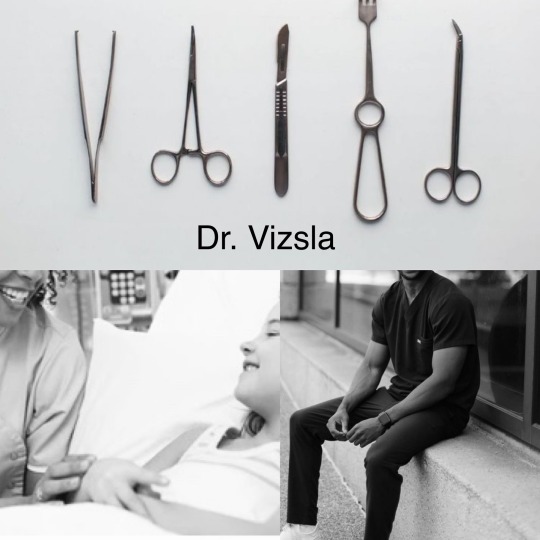
Paz is early. He knows he’s early but up until a few minutes ago it didn’t seem like that big of a deal. He is a doctor. A surgeon. He’s perfectly allowed to hover around a nurses station for whatever reason he damn well pleases, but especially so if that reason is waiting for his girlfriend to finish up the first half of her shift. Right?
But after a couple of minutes he gets fidgety, the bright colors and cheery ambience of the pediatric wing so different from the cardiac floor where his post-op patients usually land. The nurses floating around him have on sweet smiles and there are cartoon characters on their scrub tops, and he is very aware of how he is sticking out like a large, imposing, sore thumb. He briefly considers heading for the break room, the usual meeting spot for your lunch time breaks over these past few months, but your text had said you’d be quick and to wait by the nurses station, and so, he waits.
Still, he’s anxious and he misses you and his next case starts in 10 minutes. He glances around the hallway, hoping to catch a glimpse of you, eyes peeled for the violet colored scrubs you had slipped on after(reluctantly) getting out of his bed this morning. Paz can’t help but grin, remembering the way you pulled the purple fabric over your backside, twisting just enough to display your curves to his wandering eyes, shooting a wink over your shoulder. It had only been the third time you had spent the night, this time even packing a bag so you didn’t have to rush out before sunrise to make your shift, instead getting to spend those few extra minutes beneath him.
Suddenly, like a siren calling out to him, he hears your voice floating out from a patient’s room.
“-tell me what’s wrong? Did something frighten you?”
He inches closer to the open door that your voice is ringing from, attempting to look as inconspicuous as possible, always a difficult feat for someone as large as him. When he’s close enough, he peeks through the door, and there you are, violet scrubs and bright smile, sitting on the edge of a little girl’s bed, brushing a tear off her cheek with the tender crook of your finger.
“I-I don l-like needles.”
You shush the child, brushing a lock of hair behind her ear, before pushing your pointer finger gently into her nose, blowing a raspberry as you do. A giggle mixes in with her cries, and when he sneaks another peak, Paz can see that the girl is smiling up at you.
“How about this? We’ll look at all the parts of the needle and you can ask me any questions you want, sound good?”
“Can I ask you not to put it in?”
You laugh, clear and merry, not an ounce of cynicism within you, pulling the little girl in for a hug.
“No, sweetheart, you can’t. You need it so you can get strong and get out of here. But I like your thinking. Keep thinking like that, okay? Promise me?”
You’re holding out your pinky for the little girl to take, and Paz swears his heart stops at the sight in front of him. He knew you were good at your job, knew that nursing was your first true love, a passion that sat in the very center of your generous heart, but to see it up close like this was something new all together. It startled him, and even though it’s only been a few months he’s sorely tempted to bust into that little girl’s room, get down on one knee, and pledge his whole entire life to making you happy. It’s insane but it’s enough of a daydream to keep him occupied, he doesn’t even realize how much time has passed until you’re standing right in front of him, an apologetic look stained across your features, beautiful bottom lip caught between your teeth.
“I’m so sorry. I got caught up with a patient. Do you have any time?”
“I don’t, baby girl, I’m sorry. Next case is starting soon, and it’s with Djarin. You know how he is about room time.”
You laugh again, and Paz can’t help but swell with pride that this time it’s him that’s helping create that ringing sound for the world.
“Oh, trust me, the whole hospital knows how Dr. Djarin feels about room times. My shift is over at 7…” you trail off, eyes drifting down to look at your sneakers, your hands balled up inside the pockets of your scrub top. You look adorable and Paz officially can’t help himself. He dips down and captures your lips in a kiss, letting it deepen just a little too much to be considered hospital appropriate, but fuck it all, you’re so fucking cute.
“I’ll meet you back up here then. We can go grab something to eat on the way back to my place?”
You fist your hands in his scrub top and pull him down for one more kiss, smiling as he pulls away. “Sounds good, Dr. Vizsla.”

I don’t know who to tag because I’ve literally never written Paz before this moment, so if you want me to tag you in future Dr. Paz things, please let me know! <3 Big love to all of you! Happy Saturday!
Dr. Djarin Masterlist
Main Masterlist
#tied fic#doctor!paz#paz vizsla#the mandalorian au#dr. Din djarin adjacent#dr. Din djarin#paz vizsla x reader
127 notes
·
View notes
Text
Top 10 Plastic Surgeons in California
Plastic surgery helps many people live a normal life that would otherwise be unable to. Reconstructive surgery for severe injuries such as burns and physical trauma can be an intricate process. As with any surgeon, you want to make sure that the cosmetic surgeon you have in California is going to do an excellent job.
The last thing you want is to have to wonder about the abilities of your California area’s plastic surgeons, or maybe you aren’t in the area and you are researching cosmetic surgeons in an area you are unfamiliar with to protect your privacy. Whatever the case, we have done the initial research for you, locating and maintaining a list of the best plastic surgeons in California. This list, like all of our lists, is determined on opinions and experience from people like you.
Though this, and all our lists are a great start you should carefully interview plastic surgeons until you find one with experience in the areas you need. Also, you should make sure that the cosmetic surgeon is someone you are comfortable with and can verify the credentials of.
If you know a really amazing cosmetic surgeon we didn’t list or if you have an experience you would like to share, please contact us! Your comments and information can have a direct influence on this California area list.
1.Dr. Munish Batra, San Diego, CA
Dr. Munish Batra has professional experience in performing cosmetic breast surgery or breast augmentation. He is also famous for being one of the very few surgeons who has undergone extensive training in post-Gastric-Bypass Reconstructive surgery, a body contouring procedure. In 2001, Dr. Barta founded the Coastal Plastic Surgeons, which is considered as one of the leading plastic surgery practice in the country.
2. Dr. Carolyn Chang, San Francisco, CA
Dr. Carolyn Chang is a board-certified plastic surgeon who specializes in general cosmetic surgery. She is highly skilled in peroforming SMAS-Platysma facelift and preventative facial surgery. She was recently selected as the best plastic surgeon by the Nob Hill Gazette. Dr. Carolyn Chang was also included in San Francisco Magazine’s Top 150 Doctors and Marin Magazine’s best doctors.
3.Dr. Vladimir Grigoryants, M.D.Glendale, CA
Dr. Vladimir Grigoryants was named as one of America’s Top Plastic Surgeons in 2010. He is well-known as a board certified plastic surgeon specializing in cosmetic plastic surgery of the body and face. Dr. Vladimir Grigoryants is currently in practice at Plastic Surgeon Los Angeles.
4.Dr. Thomas Kaniff, Sacramento, CA
Dr. Thomas Kaniff is a board certified plastic surgeon who specializes in Rhinoplasty or nose surgery. The American Board of Facial Plastic and Reconstructive Surgery granted him this certification. He is also currently the Medical Director of Kaniff Cosmetic Medical Center.
5..Dr.Scott Mosser, San Francisco, CA
Dr. Scott Mosser’s medical training is very notable because of his advanced aesthetic fellowship in Plastic Surgery. He also performs rhinoplasty, tummy tuck, breast augmentation surgery, and liposuction, to name few. Dr. Scott Mosser is also fellowship-trained in general plastic surgery.
6.Dr.Aaron Stone, M.D. Beverly Hills, CA
Dr. Aaron Stone claims to have a strong background of training in cosmetic and reconstructive plastic surgery. He is certified by the American Board of Surgery and American Board of Plastic Surgery. Dr. Stone is also capable of performing hair restoration surgery and laser skin therapy.
7.Dr.John Hilinski, M.D. San Diego, CA
Dr. Hilinski is “double board certified” in Facial Plastic and Reconstructive Surgery as well as Head and Neck Surgery. This places him in unique company among only a few plastic surgeons in the region that have dedicated expertise and qualifications to perform facial cosmetic enhancement. In addition, he is a member of the American Academy of Facial Plastic and Reconstructive Surgery as well as the American Academy of Otolaryngology-Head and Neck Surgery.
8.Dr.Sassan Alavi, M.D., F.A.A.C.S. San Diego, CA
Dr. Sassan Alavi is the Head Cosmetic Surgeon and Medical Director of the Center for Cosmetic Surgery in San Diego. He is a cosmetic surgeon who is well-known for having completed a fellowship in facial plastic and reconstructive surgery. Dr. Sassan Alavi is also highly trained in performing liposuction and breast augmentation procedures.
9.Dr. Granger B. Wong, D.M.D., M.D. Sacramento, CA
Dr. Wong’s distinct perspective on managing congenital anomalies has allowed development of crossover techniques in aesthetic surgery. He applies virtual-reality computer software, endoscopic (minimally invasive) surgery, ultrasound and lasers to aesthetic body contouring and facial rejuvenation. His clinical practice includes aesthetic surgery, congenital craniofacial anomalies (including cleft lip and palate), pediatric plastic surgery, maxillofacial surgery and vascular anomalies. Dr. Wong’s research interests are in distraction osteogenesis, resoluble biomaterials and minimally invasive surgical techniques.
10.Dr. Gary Motykie, M.D., F.A.C.S. West Hollywood, CA
Dr. Gary Motykie completed his training in plastic surgery at the University of Texas, where one of the top burn reconstruction facilities is found. He is considered as a specialist in breast surgery, body contouring, rhinoplasty, and facial rejuvenation. Also, Dr. Motykie completed an Advanced Cosmetic Surgery Fellowship in Beverly Hills.
1 note
·
View note
Text
Best general surgeon in Ambattur Chennai
General surgery is a medical science dealing with different abdominal contents like the bile ducts, the appendix, the gallbladder, the pancreas, liver, colon, small bowel, stomach, and esophagus. It also includes the thyroid glands. General surgery also deals with different diseases that affect hernias, peripheral vascular surgery, trauma, soft tissue, breast, as well as skin. Procedures like colonoscopy and gastroscopy are also included here. For this you need the best general surgeon in Ambattur Chennai.
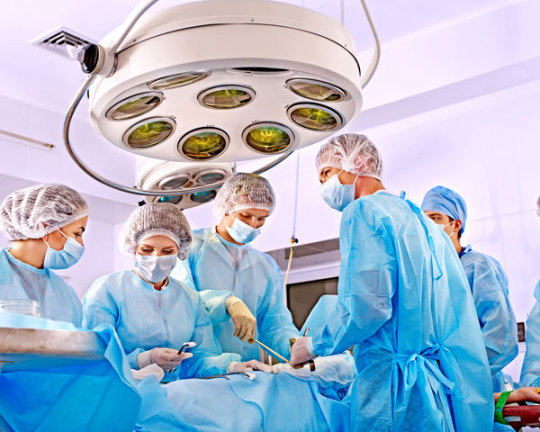
General surgery is one of the many fascinating disciplines that doctors can pursue due to the large number of general surgery jobs available at all times. If you are qualified as a general surgeon, you can work in almost any hospital where your degree is valid. General surgery is a very broad field. General surgeons cannot perform very complex surgery. This is the area of highly specialized surgeons who operate the heart, brain, etc. Due to the huge demand for this service, finding a job for a general surgeon is very easy. Medical journals have numerous advertisements for these positions. Advertising is becoming more and more frequent on the Internet.
At KGJ Hospitals, we deal with a range of surgical ailments and emergency care services, led by Dr. J. Ashok Kumar, a leading General Surgeon in Ambattur Chennai offering high-quality surgery treatment. In addition to performing minor surgeries, our team of general surgeons performs complicated abdominal and trauma surgeries. Being an expert in Laparoscopic or keyhole surgery, we perform many general surgeries in a painless way successfully. The major general surgeries we perform- Trauma surgery, Breast surgery, Colorectal surgery, Vascular surgery, Endocrine surgery, Transplant surgery, Laparoscopic surgery, Surgical oncology, Cardio thoracic surgery, Pediatric surgery, Bariatric surgery and Weight Loss Surgery.
0 notes
Text
Capital Development Authority CDA Hospital Islamabad Latest Jobs 2022
Capital Development Authority CDA Hospital Islamabad Latest Jobs 2022
CDA Jobs are opening for Consultant Cardiac Surgeons, Pediatric Surgeons, Neuro Physicians, Maxillofacial Surgeons, Orthodontic Specialists, Plastic Surgeons, Endocrinologist, Vascular Surgeons, Rheumatologist, Spinal Surgeons, Director Biomedical, Chief Nursing Superintendent, Associate Neuro Surgeons/Physicians, Clinical Psychologist, Audiologist, Speech Therapist, Medical Officers, Head Nurse,…

View On WordPress
0 notes
Text
Why Is The Field Of Neurology So Important Today?
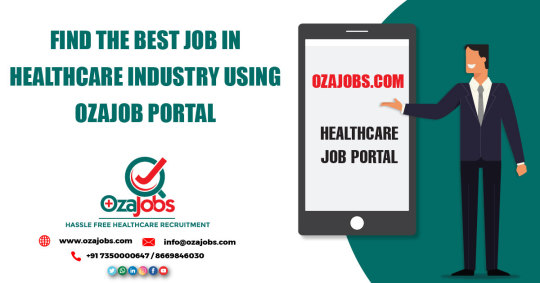
Visit us:- www.ozajobs.com
The country is progressively being seen as a thrilling center for therapeutic cures for all types for patients and illnesses internationally. We are proposing all kinds of most important as well as forward-thinking and state-of-the-art amenities, set-ups, cures, medics, groups, substructures. It is a well-known fact that Neurologist surgeon jobs in India are in demand for many distinct, arguable, and non-debatable motives. The detail however rests that we need more medics to treat illnesses related to the brain than ever before.
A neurologist is a capable therapeutic physician with specialty in treating complaints of the nervous scheme and brain. Some of these physicians also specify in handling comparable situations in children and are called Pediatric neurologists. Neurologist surgeon jobs in India are grasping a sheer increase because of the amassed number of patients. A neurologist’s enlightening training encompasses five and a half years of therapeutic college, plus 3 years of particular exercise. But people trained in neurology cannot perform surgery, a vocation for which Neurologist surgeon are trained.
To be qualified as a Neurologist surgeon one has to first complete his MBBS degree and then apply for either a M.CH neurosurgery, which is a five year post graduate study program, a course which is now being offered by a few Medical schools. The traditional method for most Neurologist surgeons has been to complete first their three year MS In general surgery and then apply for a three year M.CH degree. The latter pathway has been used and is still being used by most Medical schools in the country to train aspirants in this field.
Those competent as neurosurgeons can inspect, identify, and execute operations to challenge various complaints of the nervous system. Neurologist surgeons are competent to carry out operations on the brain, backbone, and outer nerves to aid patients get respite from numerous illnesses like long-lasting discomforts, injuries, eliminate cancers etc. They may also be common neurosurgeons or have devoted exercise in any one part of surgical procedures. Neurologist jobs in India can also include handling vascular illnesses and ailments like epilepsy and Parkinson’s etc. The Neurosurgery degree is an extremely eminent and sought after requirement and there are many beginnings for Neurologist jobs in India.
Medical knowledge in identifying and handling psychiatric illnesses such as cerebral damage depression, strain complaints(containing post-traumatic), over-all life matters, managing with various strains in life, Dementia/Alzheimer’s, to name a few are abilities and involvements that will stand an aspiring Neurologist in good stead in the job market. Applicants who can show ground knowledge in arenas such as restoration amenities would certainly have a benefit and advantage over those still at an early phase of consideration for their first employer. Neurologist jobs in India, particularly those in well-established infirmaries are always keen to hire applicants who enjoy functioning inside a multidisciplinary side and are given chances where they may be involved in fields like scientific supremacy, service growth if they show potential. Such applicants get many paths to develop as they are continuing to improve their expert services.
With better facilities and technology Indian infirmaries are offering people holding Neurologist surgeon jobs in the country, the same technology and scope for treating their patients like their counterparts abroad. Today the discipline of Neurosurgery and Neurology is not limited to a few hospitals in the big metros, but now we are finding that there is demand for these specialists from smaller cities too.
The best choice for those looking to follow a neurologist’s career, whether it is in a private or government infirmaries; medicinal healthcare axes, Reintegration centers, investigation centers etc. one must try to find expert staffing organizations. Ozajobs is a recruitment portal that specializes in healthcare jobs and it help trained Medical professionals find their Niche careers in the country.
#Neurologist jobs#Neurologist jobs near me#jobs for Neurologist in india#vacancy for Neurologist#Neurologist jobs in india#HealthcareJobs
0 notes
Text
Teleradiology Reporting Services: Do You Really Need It? This Article Will Help You
The ever-evolving medical world keeps bringing out solutions to the challenges posed by the fast pace populace. Radiology is keeping pace with modernity and has very well integrated technology and telecommunication to formulate a remote mode of extending services – Teleradiology.
Today, Teleradiology has enabled the clinician in providing the best of patient care and saving lives and thus becoming an indispensable healthcare service. Teleradiology supports the clinicians/hospitals/healthcare service providers with many solutions, compensating the shortage of radiologists and reporting for all imaging modalities – X-Ray, Ultrasound scan, CT scan, MRI Scan, PET scan, Nuclear Medicine, Interventional imaging.
1. Round-the-clock Reporting service supports the healthcare service providers with radiology services round the clock for all days irrespective of no. of radiologists on-site or subspecialty reporting requirement.
The defined reporting TAT ensures a quick TAT of as early as 30 to 60 minutes for all modalities of imaging both in cases of emergency and regular cases. In this competitive and fast-paced environment, Teleradiology enables hospitals from remotest places to small or mid-size hospitals to provide patient care effectively irrespective of time.
2. Nighthawk Reporting services works out as an ideal option for many healthcare service providers who cannot afford to recruit a radiologist beyond regular working hours and get benefitted from after-hour radiology services.
Nighthawk reporting allows the radiology department to exhibit its duty of quality reporting without any delay. This late-night radiology coverage empowers the hospitals in extending patient care to a high level with better outcomes, and in a bigger perspective improves the face-value and bottom-line score of Hospitals.
3. Subspecialty Reporting services helps in identifying the subspecialty pathologies apart from identifying the common findings, normal variants quickly. The accuracy of reporting and detailed interpretation of the images (expertise in particular anatomy or type of reports/modality) improves the prognosis by facilitating the early diagnosis and proper treatment planning. Subspecialty reporting adds value eliminating the need for a second opinion; and improves the productivity and reporting TATs also.
Subspecialty reporting can be categorized into the following specialty –
Thoracic Imaging
Breast Imaging
Cardiac Imaging
Abdominal Imaging
Musculoskeletal Imaging
Neuroradiology
Neuro-interventional Radiology
Vascular Interventional Radiology
Emergency Radiology
Pediatric Radiology
Nuclear Medicine
4. Emergency Reporting services ensures the early intervention and initiation of required action for emergency case. The involvement of expert radiologists reduces the TAT duration and contributes to the immediate diagnosis of acute conditions and patient care.
5. Weekend / Holiday Reporting services ensure the regular radiologists are able to utilize their break productively and return to job energized without any of the radiology reporting being stalked/trailed at the health center.
6. Second Opinion Reporting service is access to expertise for getting detailed imaging reports to facilitate a better understanding of the situation or decide on the course of treatment or to understand the progression of disease or treatment outcome. Experts are able to contribute through their experience and make a value-added difference to disease management/treatment.
7. Access to Radiology by healthcare centers present at geographically challenged areas either by altitude or distance. Primary or secondary healthcare centers have benefited from teleradiology which diminished the need for on-site radiologists and have benefitted from subspecialty reporting too. This has improved patient care services through quality and timing.
Benefits of Teleradiology reporting:
· Availability of radiology services round the clock (24 x 7 x 365) including night-time and on weekends/holidays
· Access to subspecialty radiologist’s reporting
· No backlog/delay in imaging reports delivery (improved TAT)
· High-quality patient care without delay
· Reports checked by more than one radiologist (preliminary/final reads)
· Better time management of radiologists due to login enabled cloud-based system (saves on commuting)
· Software enabled workflow helps in timely delivery of reports
Cloudex Radiology Solutions offers a plethora of Teleradiology Services:
The team of experienced, expert and qualified radiologists at Cloudex’s panel extend teleradiology services encompassing all type of reporting services to fulfill the growing demand of radiology services of health providers by defying the distances and time zone. The quick TAT, accuracy, standardized report protocol, coordination network between the reporting radiologists, clinician/surgeon/technician, and administrator contributes to the delivery of services benefitting the hospital and patient.
At Cloudex, we support you to have that winning edge.
#Teleradiology#TeleradiologyIndia#teleradiologysolutions#teleradiologyinindia#teleradiologyreporting#teleradiologysolutionsbangalore#TeleradiologyServicesIndia#TeleradiologyServices#teleradiologyservicesinbangalore#bestteleradiologyservices#canadianteleradiologyservices#teleradiologysolutionsindia#teleradiologysolutionsbengalurukarnataka#teleradiologyreportingcompanies#TeleradiologyReportingServicesinIndia#TeleradiologyIndonesia#TeleradiologyNigeria
0 notes
Text
A Guide To Surgery
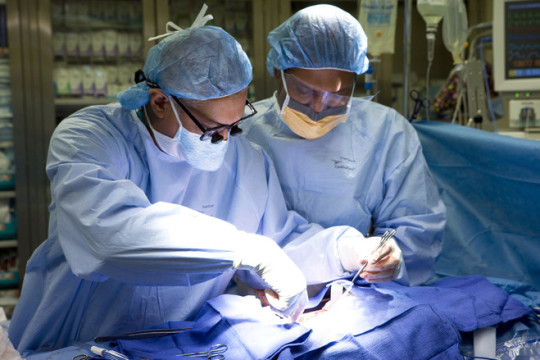
The American Board of Surgery (ABS) was established in January 1937, receiving its formal charter in July of that year. The American Surgical Association had created a committee with representatives from other surgical societies with the goal of putting together a certification procedure for individual surgeons. The main reasons for this were protection of the general public and enhancement in that specific field of medicine. At that time, the Advisory Board of Medical Specialties was the governing body that had the power to decide which specialty field was suitable for certification and which was not. My site 여유증수술
Today the American Board of Surgery (ABS) operates independently as a non-profit organization with the main job is of certifying surgeons who have the required qualification in terms of education, training and knowledge; have at least five years practical training; and have successfully passed all examinations. Currently, it has jurisdiction over general, pediatric, vascular surgeries, post surgical critical care and hand surgery.
Surgery is of two types: outpatient surgery and inpatient surgery. Outpatient, as the name suggests, does not involve a hospital stay and is usually conducted in the doctor's office or clinic. Inpatient surgery requires the patient to be admitted to the hospital a day prior to the operation and to stay for a certain period after the operation.
0 notes
Text
LASIK Eye Surgery: Better Vision with Laser Surgery
What Is Laser Vision Surgery?
Excimer laser refractive surgery, commonly known as laser vision correction, has been around for the past 20 years. This procedure is performed to reduce or eliminate the need for glasses or contact lenses. If you are considering laser vision correction, you need to know what it is, what to expect, and what the benefits, risks, and alternatives are.
Good Candidates for Vision Surgery
Laser vision surgery is designed to help individuals who are myopic (nearsighted), hyperopic (farsighted), or/and have astigmatism, which is an irregularity in the surface of the front of the eye, the cornea.Laser vision surgery is not for everyone. You are a candidate for this procedure if:
You are over the age of 18 years old.
You wish to reduce or eliminate the need for contact lenses or glasses.
Your vision has been stable for at least a year
There are no ocular or medical contraindications to the surgery.
Your profession/job/vocation does not prevent you from having this procedure.
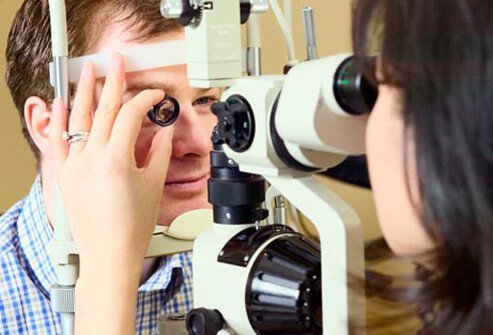
Cautions for Vision Surgery
Certain medical problems that may affect healing could make you a poor candidate for laser vision correction. Conditions such as collagen vascular diseases, lupus, rheumatoid arthritis, and HIV-associated diseases may influence proper wound healing, which is necessary to achieve a good result.
Certain eye conditions such as dry eyes, Sjögren's syndrome, irregular astigmatism, large pupillary size, thin corneas, or keratoconus may also make this procedure inappropriate for you.
You May Still Need Glasses
Laser vision correction is designed to reduce or eliminate your need for glasses and contact lenses. Although many patients are able to function well without any glasses or contact lenses, some still require optical correction for certain tasks. In addition, laser vision correction does not change the condition known as presbyopia, which is the expected difficulty with close work as one reaches the age of 40 or older. Monovision laser procedures, which involve having one eye corrected for distance and the other for seeing up close, are an option to reduce the effects of presbyopia.
How LASIK Works
LASIK is the name for the most commonly performed refractive laser procedure. It involves making a very thin flap in the cornea, folding it back on its own hinge, and then an excimer laser is used to vaporize a small amount of corneal tissue. The flap is then placed back into position.
Wavefront-Guided LASIK
Like other technologies, LASIK and other refractive laser procedures continue to improve. There are now ways to customize the application of excimer laser removal of corneal tissue to each patient's eyes, making visual results better and more predictable, with fewer visual side effects.
PRK, Epi-LASIK, and LASEK
Photo-refractive keratectomy (PRK), involves the use of the excimer laser on the cornea without making a LASIK flap. This technology preceded LASIK and was replaced by LASIK, for the most part, but it has now re-emerged as a more favorable choice for patients with thinner corneas or pre-existing dry eyes.
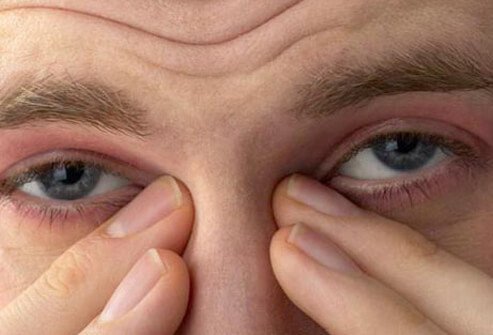
Strong Rx: Implantable Lenses
There are some patients whose myopia (nearsightedness) is so great, that laser refractive surgery cannot correct their vision without significantly thinning the cornea. For those people, a possible choice could be an artificial lens that is inserted into the front of the iris by means of a small incision. These plastic lenses have been FDA approved for the treatment of high myopia. There are risks to this surgery, including loss of vision.
Risks of Laser Eye Surgery
You must remember that elective laser vision correction is indeed surgery and should not be undertaken lightly. Both LASIK and PRK have the possibility of causing temporary or permanent damage to the eye, including double vision, streaking of vision, haloes around light, increased sensitivity to bright lights, glare, dry eyes, continued need for glasses or contact lenses, and rarely, loss of vision.
How to Choose an Eye Surgeon
When choosing an ophthalmologist to consult with regarding laser refractive surgery, do some research. This is an important decision and your choice should involve more than the factor of price alone. Personal recommendations, experience, and actual results are far more important than seeing advertisements on TV or in printed media.
What to Expect During Eye Surgery
Refractive laser surgery itself takes about 30 minutes. Pre-operative evaluation is extremely important and this will be performed prior to your surgical session. The results from the tests done before surgery will be used to make the correct intraoperative decisions. The eye(s) will be numbed with some drops and you will be lying on an operating table for the procedure. Both eyes are usually operated on the same day. You will be given instructions after the surgery and told to use certain eye drops to promote healing.
Preparing for Surgery
Pre-operatively, your ophthalmologist may want you to use eye drops to reduce dry eye or inflammation. You will also be given instructions about when to discontinue wearing contact lenses and when to stop applying facial lotions and creams.
Early Recovery From Surgery
Your ophthalmologist will want to see you 1 or 2 days after surgery. You will be given instructions as to when you may drive and what activities to avoid. After surgery, you may have mild pain or discomfort, a foreign body sensation in one or both eyes, hour-to-hour fluctuations of your vision, and some visual haze, together with tearing of the eyes.
Full Recovery Timeline
There may be fluctuations in your vision for as long as 6 months after surgery. Specifically, you may have symptoms of glare, rings around lights, light sensitivity, and difficulty with night driving. In addition, you may experience a feeling of dryness in your eyes. Your ophthalmologist will examine you during this period of time. Be sure you express your concerns and ask questions.
How Effective Is LASIK?
The success rate for refractive laser vision correction is high, both with LASIK and PRK. More than 95% of nearsighted patients achieve uncorrected visual acuity of 20/40 or better. One or two out of 10 patients will require a second surgery, known as an “enhancement.” The risk of needing a second procedure is lower for people with smaller amounts of pre-operative refractive error.
Dry eye symptoms affect about 20% of patients after laser vision correction. This may be permanent and require the use of lubricating drops or other medications.
Uncommonly, there can be visual loss or corneal ectasia, which is a weakening of a cornea that is relatively thinner than it was prior to surgery.
Are you unable to see the open world due to your eye problems, if yes, then come to Indore India Eye Care Hospital in Indore, because Indore India Eye Care Hospital is the best eyes hospital in Indore, All eye related diseases are treated here at very low cost. Dr. Birendra Jha is an experienced Cataract surgeon of this hospital. Dr. Birendra Jha provides Glaucoma, Cataract Surgery, Squint/ (तिरछापन)/ Eye Deviation, Pediatric Ophthalmology, No Touch Lasik & Refrective Surgery and Orbit and Oculoplasty Services. Book an Appointment today call us 9977141260, visit on online website - http://www.indoreindiaeyecare.com/
Request an Appointment / General Inquiry:- https://www.indoreindiaeyecare.com/contact-us.html
Please go through our social media :
like our page to know more about eyes
Facebook :- https://www.facebook.com/eyeclinicsinIndore/
Please do follow on Instagram
Instagram :- https://www.instagram.com/indoreindiaeyecare_/
To More Post: - Glaucoma and its risk factors
#Cataract surgeon in indore#Best pediatric ophthalmologist in indore#Squint specialist in indore#Lasik eye surgery in indore#Lasik surgeon in indore#Doctor for Lasik surgery in indore#Squint surgeon in indore#Best eye specialist in indore#Eye surgeon in indore
0 notes
Text
'Everything went black': Christchurch surgeon who saved four-year-old still cries
Id never seen anything like that before, Khanafer says.
Khanafer has years of experience with highly complex surgery and is used to treating adults with devastating injuries. But this time the patient was a child a weak point for the father-of-four.
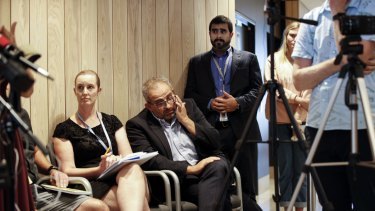
Vascular Surgeon Adib Khanafer, centre, at a media briefing after the Christchurch massacre in March.Credit:Monique Ford/Stuff
No words to describe the horror
All he knew was that there had been a shooting. He didnt know yet the full extent of the tragedy that had unfolded at the Al Noor Mosque nearby, and at the Islamic Centre in Linwood. But he knew how he felt.
The look of the girl on the table was very painful for a father, and any surgeon, to see. I cant find the words to describe how horrific it was.
The girls father, who cannot be named as his daughter's name is suppressed, had been walking towards the mosque holding her hand. It would have been her first visit.
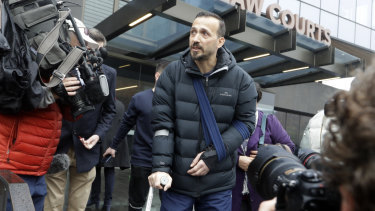
Temel Atacocugu, a victim from the Christchurch mosque shootings, leaves the Christchurch District Court on Friday.Credit:AP
As they approached the entrance, they heard a friend shout: Run! Thats when the father saw the shooter, aiming straight at his daughters head.
He lifted her by the hand but the first bullet hit her bottom. The second her stomach and the third her toes.
The father was shot three times too. He threw his daughter between the footpath and a car for protection and threw himself next to her, playing dead.
After the gunman left, strangers rushed over to help. She had lost a lot of blood already. By the time she arrived at the hospital, she was blue and had no pulse.
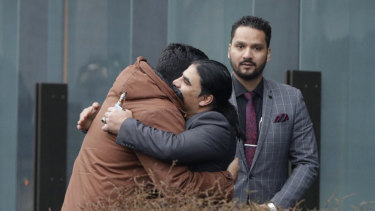
Abdul Aziz, center, a survivor of the Linwood mosque shootings, is embraced by friends outside the Christchurch District Court.Credit:AP
'Everything is black'
March 15 started as an ordinary day for Khanafer. He cycled to work, did ward rounds and started getting ready for a scheduled surgery around 12pm.
He had coffee in the morning but no lunch as he planned to get home early to spend time with his family.
The day changed around 1.45pm, while Khanafer and a colleague were doing an angioplasty. There was a trauma call about a shooting but they didnt give it much attention and carried on.
Loading
A few weeks prior, Khanafer treated a patient who had been involved in a shooting with police during a domestic violence incident. He had repaired the mans artery in the leg.
It was just another day in the office for me. Fifteen minutes later, his phone rang.
A nurse took the call and put it on speaker phone. The nurse on the other side said he needed to come to theatre immediately. Its common for a vascular surgeon to be called in when there is bleeding in theatre, where the situation is usually under control.
In this case, pediatric surgeons had found a major vessel injury and were panicking, Khanafer says. They demanded his presence immediately. He de-scrubbedand ran the 100 metres across the corridor to reach the operating room.
Loading
Once he had his surgical glasses on, Khanafer scrubbed, took a deep breath and buried his emotions to switch into vascular surgeon mode as he approached the operating table.
He identified the main problem: a hole to the inferior vena cava, a major vein that carries deoxygenated blood into the right atrium of the heart. Khanafer didnt even have child-sized instruments but there was no time to waste.
With major vein injuries, patients can lose about 500 millilitres of blood in five to six seconds, Khanafer says.
He needed to get control at the top and the bottom of the vein to stop the bleeding. But the bullets had done so much damage Khanafer could not see anything. With gun wounds everything is black, you dont know what youre looking at.
He kept washing and cleaning the area to find the edges but eventually had to take a guess. It worked: the hole was shut and everything was watertight.
He moved on to injured arteries, an easier job: I put a clip on it and that was the end of it.
When we had situation under control, I looked at the paediatric surgeons and said 'are you happy to carry on? I wanted to get out of there quickly.
"As soon as I took off my gown and my surgical loupes, I started crying.
Two colleagues came and hugged him and told him what theyd heard. A gunman had entered the Al Noor mosque and shot at worshippers. It was unclear how many people were injured or dead.
'We are all humans and we all bleed'
Khanafer, who was born and raised in Kuwait and whose wife is Lebanese, is part of Christchurchs Muslim community.
It dawned on him that the child he just operated on could have been his own.
He immediately rang his wife. She was fine and the children in lockdown at school. He didnt have time to chat longer several patients needed his help.
Meanwhile, their 13-year-old daughter, who was in Auckland for a soccer tournament, texted her mum to tell her to take off her hijab.
She was worried for her, Khanafer says. Her mother reassured her: There is nothing to worry about. We are still in Christchurch, we are still in a safe place and we have to have faith in the systems around us, Khanafer says she told her.
Still, the teenager texted her mum every hour that afternoon to check on her.
The family moved to Christchurch in 2010 after 15 years in the UK, where Khanafer completed his medical training. He knew two people who died in the attack, including one of his patients.
His children two girls aged 13 and 14, and two boys aged seven and eight used to take Arabic lessons with the Linwood Mosques Imam.
When Khanafer first heard there had been a mass shooting, he worried the gunman was an Islamic fanatic.
When he learnt it was Muslims in their place of worship who had been the target, he was shocked.
When we pray, our back is to the door. It was a cowardly act against peaceful people.
Khanafer stresses he would have been equally shocked if the shooting had happened in a church, a temple, a synagogue, or even a mall, concert hall or stadium.
As a doctor, religion comes at the bottom for me. We are all humans and we all bleed.
A long night
The gunman shot at least 98 people. Forty-nine of them died at one of the mosques.
The rest arrived at the emergency department, many suffering life-threatening injuries. One died at the hospital on the day and another succumbed to his injuries a couple of months later.
Emergency medicine clinical lead Dominic Fleischer previously said 180 units of blood were used on March 15, with 12 operating theatres working at once.
Khanafer was called in to help with five other patients that afternoon.
Around 8pm, he had done all he could. He cycled home in the dark, pedalling fast. He was keen to hug his wife and children.
He barely had time for a meal before he was called in to hospital again at 10.30pm to help with two patients.
At midnight, he went to the intensive care unit to check on the little girl. She was about to be transferred to Starship Hospital in Auckland but became unstable.
Khanafer called his paediatric surgeon colleague. They found another hole in the vein, along with two other bleeding points, which they repaired.
Within an hour, she was ready to transfer. Khanafer reassured the childs parents. Her condition was critical but he was confident she would survive.
He went back home about 1.30am.
Muslims are meant to pray before sunset on Fridays but on March 15, Khanafer prayed late.
Khanafer is one of 11 children. He said his phone rang all night with friends and family from overseas checking the family was OK as well as colleagues from around the world sharing words of support.
He eventually fell asleep at around 5am.
I dont think anyone in Christchurch went to bed early that day.
'Miracle kid' on the mend
Khanafers daughter is not as worried for her mother anymore. I told my daughters this is the time to wear the hijab, but they said no.
His two younger boys, aged seven and eight, were less affected. They are in their own world; they laughed at me when they saw me crying on TV.
The little girl has been discharged from Starship Hospital and is receiving fulltime care at a rehabilitation centre. She still cant see and it will take up to a year of rehab for her to walk again but she remembers the attack and is now talking.
Shes a miracle kid, her father says.
At the end of the hour-long interview, Khanafer jokes that the photographer must be asleep. He apologises for talking for so long, and for getting emotional.
Every time I talk about [the girl], I cry a little bit. I try not to.
It was an evil thing to happen. I hope it never happens again.
Stuff.co.nz
Most Viewed in World
Loading
https://www.brisbanetimes.com.au/world/oceania/everything-went-black-christchurch-surgeon-who-saved-four-year-old-still-cries-20190614-p51xw1.html?ref=rss&utm_medium=rss&utm_source=rss_feed
0 notes
Text
Reasons Why You Visit a Dermatologist

With the youth craze taking place and everyone seeking a more youthful appearance, it should come as no surprise that dermatologists are in high demand, and many people seek them out for cosmetic purposes. These doctors of Dermatology are not just in the business of making people beautiful, they also treat some very serious skin conditions. Moreover, choosing the right doctor can also pose a challenge because if you are going to see them for skin conditions and they are accustomed to treating cosmetic issues, you may want to look for one that specifically treats your ailment.
The most common reason people visit dermatologist in Augusta is due to acne. Many teenagers undergo dermatology treatments because as their hormones are changing and they can develop severe acne as a result. Many adults also suffer from acne and have to continually have specialized treatments provided by their doctor. For some people, once they pass puberty they never deal with acne and for others it is something they deal with on and off through their entire lives.
Another common ailment that people visit their dermatologist is psoriasis, which is a chronic condition of the skin that causes extremely dry patches on areas of the body such as the knees, elbows and scalp. It is typically treated with various creams to hydrate the skin as much as possible and often oral medications may be prescribed depending on the severity of the condition. There is no cure for psoriasis and the goal is to keep the condition under control as much as possible by keeping the areas affected hydrated. Special shampoos are designed to help those with scalp psoriasis and many dermatologist will prescribe medicated creams and shampoos.
In addition, many people visit a doctor of dermatology if they have stretch marks, which can happen after pregnancy or losing a lot of weight. There are specialized laser treatments that dermatologist can use to help with stretch marks that creams simply cannot do. Your skin is the first aspect of you that you present to the world, and therefore, rather than hiding your stretch marks with clothing, you can have them treated and removed or diminished greatly.
A big reason people visit dermatologists is due to sun damage. This is something that happens over years of being in the sun without sunscreen. What happens is the skin becomes dry and you have premature wrinkling on those areas that were exposed to the sun, such as your face, where wrinkles can become quite deep long before they should. Sun damage is very serious and while there are many treatments in dermatology for this condition, nothing can restore the skin to its state it was before the sun's damage. Therefore, it is crucial to always where a high levels of sunscreen if you live in a super sunny and hot area of the country.
You think you need to see a dermatologist. Perhaps you have an odd mole, varicose veins, a rash that won't go away or any number of conditions or problems with your skin. You live in the Colorado Springs area, but you've never had cause to see a dermatologist before. So what is the best way to find a Colorado Springs dermatologist?
It could be as simple as a search in the Yellow Pages or on the internet, but instead of just closing your eyes and making a choice, there are some steps you can take to make sure that you see the Colorado Springs dermatologist who is best for you.
The Right Doctor for the Right Job
While most dermatologists certainly have knowledge of the range of dermatological procedures, they tend to specialize in a certain area, so depending upon your need, you'll want to choose a doctor who specializes in your condition. Here are some areas of specialization. Which one applies to you?
1. Skin condition or disease - if your problem is one where you a persistent, painful or chronic skin condition, you want a doctor who specializes in this area. Examples of this type of condition are acne, dermatitis, eczema or undetermined rash or pustules.
2. Phlebotomist - A phlebotomist is a doctor who specializes in the vascular system and the movement of the blood. If you have varicose veins which need to be treated this is the type of doctor who can help.
3. Cosmetic Surgeon - The removal of moles, scars birthmarks or even tattoos would be done by a cosmetic surgeon.
4. Pediatric Dermatologist - a specialist in the dermatological problems of children.
Once you've looked into the right type of dermatologist, there are some additional factors you may want to consider.
Is the doctor certified?
Is the doctor you've chosen actually certified to treat you in the area dermatological care you need? A certified physician should be able to produce this documentation on demand.
Is the doctor covered by your insurance plan?
Before you begin treatment, check with your insurance agent to make sure that the procedures you need done are covered by your policy and the doctor you've chosen is within your health plan. In today's insurance environment always check to be sure the doctor you've chosen will be paid by your provider.
Get a referral.
One wise decision before you do anything else is to go to your general care physician. They will be able to tell you if your need is great enough to see a specialist and will almost certainly be able to refer you to a qualified Colorado Springs dermatologist.
Find out best micro- orthopedic and dermatologists in the UK by clicking on 英国打瘦脸针.
0 notes
Text
Tuesday, February 14, 2017
I had a sonogram scheduled at Magee at 9:30am and a fetal echocardiogram scheduled at 11 am. Carl was not able to be at this visit with me which sucked. It’s how things seem to go with scheduling though. We seem to be getting a taste of how hectic life is with a baby who has a CHD. I have missed more work with these appointments over that last few weeks than I ever have the entire time of working at the salon. I am lucky to work for my sister who is 100% on board with whatever has to be done for Icie. All of our family members are in this with us, and Icie is their baby as well!
The sonogram was pretty routine. I found out Icie is measuring right where she should be and weighs 2lbs 7oz. I got more adorable 3D pictures of her and off to the echocardiogram I went. The eco was also the same as last time. Seeing my baby’s heart moving and hearing it beat should be comforting to me, but all it does is remind me of her heart defect. Our poor little girl.
After the eco I met with the pediatric cardiologist once again. She had 2 new pieces of information for me. It seems every time I meet with a doctor, or sonogram tech I find out new information. It’s becoming normal to me- and that really sucks.
1. This visit I learned that what Icie has is technically a TOF type. The new images seen at this appointment now points to “double outlet right ventricle”. Basically, the aortic valve if pushed more to the right than normal. With TOF the aortic valve is in the “center” of the heart. So since Icie’s aortic valve is more to the right it’s considered DORV. The surgery will be the same. The only variation is when the patch is placed to cover the hole in the lower chambers of her heart it will have to be brought out more into the heart so that the patch can cover the aortic valve as well. The likely hood of there being small holes around the patch after surgery is higher with DORV vs TOF just because the patch is having to be stretched further. I was told to not worry about it if that occurs. Small holes are better than one massive hole and sometimes they close on their own. I just learned the legit name to our daughters heart defect, once again.
2. As babies we are all born with 2 veins running from the heart. A right superior vena cava and a left superior vena cava aka SVCs. The left SVC degenerates and we are left with only the right SVC. Whelp!!! Guess who has the left SVC also! Bingo baby- Icie. Normally the right side of the brain and right side of the body’s blood goes to the right SVC as well as the blood from the left side of the brain and body. With Icie since she has the left SVC, the blood from the left side of the brain and body will be routed to the left SVC first before being routed to the right SVC. The left SVC apparently runs behinds the heart before being routed into the right SVC. I was told this needs no intervention and can just be left alone. I was also told that people who have this are normal and nothing results from it. Having a left SVC present is considered a rare congenital vascular anomaly. We are 2 for 2 on the rareness count! This news really didn’t shock me. I had no clue this was a thing, once again, but I think I am just so use to hearing bad news at these appointments that it is becoming normal for me to react with a head nod and ask questions without crying. I really wished Carl was here at this point. I was scared I would fuck up relaying the information to him, and this is important information! I had the pediatric cardiologist write things down for me on her print outs which definitely helped.
We went over what will happen after delivery, just like last time. I also-once again- was told new information. Once Icie is born, she will be wiped down and taken to make sure she is breathing properly. If she is stable Carl and I “may” have a little bit of time with her alone. Here comes the new info. After, she will be taken and have lines run from her belly, hands , feet and sometimes head, since baby veins are hard to find, to monitor her 02 levels. Poor Icie will have needles jammed in her fresh little body within 15 min of being born. Makes me very angry how unfair this entire situation is. All that comforts me now is that she will never remember any of this. Carl and I will though. Our family members seeing Icie for the first time all needled up will remember too. Then the normal information Carl and I have had beaten into our brain was refreshed. Carl will be in charge of watching the blue wavy lines which are Icie’s 02 levels and the main question he needs to ask is if Prostaglandin (PGE) has been given. PGE is a medication that is used to open the arteries to help with 02 absorption. If her 02 levels are above 85 she gets to go home with us if it goes below 85 off to Children’s Hospital for surgery. If she goes home my job is to fatten her up. They like to do open heart surgery on babies who are 8-9lbs and are 4 -6 months old. Hopefully we do get to take her home and enjoy our little baby. It would be nice to have her with us and pretend things are somewhat normal for a few months before we hand her off to a surgeon.
On the way to the genetic department, I was somewhat bombarded in the hallway by a woman who runs a study on brain development and children with CHDs’. She handed me a packet of information about what would happen during visits and all of this stuff. Normally I like studies, I think they are beneficial and are great to research but I was really annoyed by this. I have enough appointments already and I really don’t feel like adding more into the mix, especially at Children’s Hospital. Once Icie is born she would need to go to these appointments and once again, the last place I want to be with her once I get her home is back in a hospital. Sorry science, but not this time around. I need some normalcy with my child.
After that I went to see the genetics department to basically have the visit summarized and see if there were any more questions I had. I did not have any questions and by this point Carl had joined me and he had no questions either, so off to scheduling. The scheduling nurse was really on the ball and already had dates and times that we could be seen. There were 6 appointments that had to be coordinated within a certain time frame. The next set of appointments scheduled for March were another sonogram, echo, genetics department as well as a tour of the NICU. In April I had another sonogram, echo, genetics appointment and this time meet with a high risk delivery nurse just in case the midwives change their mind on me.
Next thing on the agenda is happening tomorrow. Carl and I tour Children’s Hospital and meet with Icie’s surgeons. I will post about that visit tomorrow.
#tof#tetralogyoffallot#dovr#doubleoutletrightventricle#chd#chdawareness#fckchd#chdsux#firsttimemom#firsttimeparents#heartwarrior#heartmonth#heartmom#daughter
1 note
·
View note